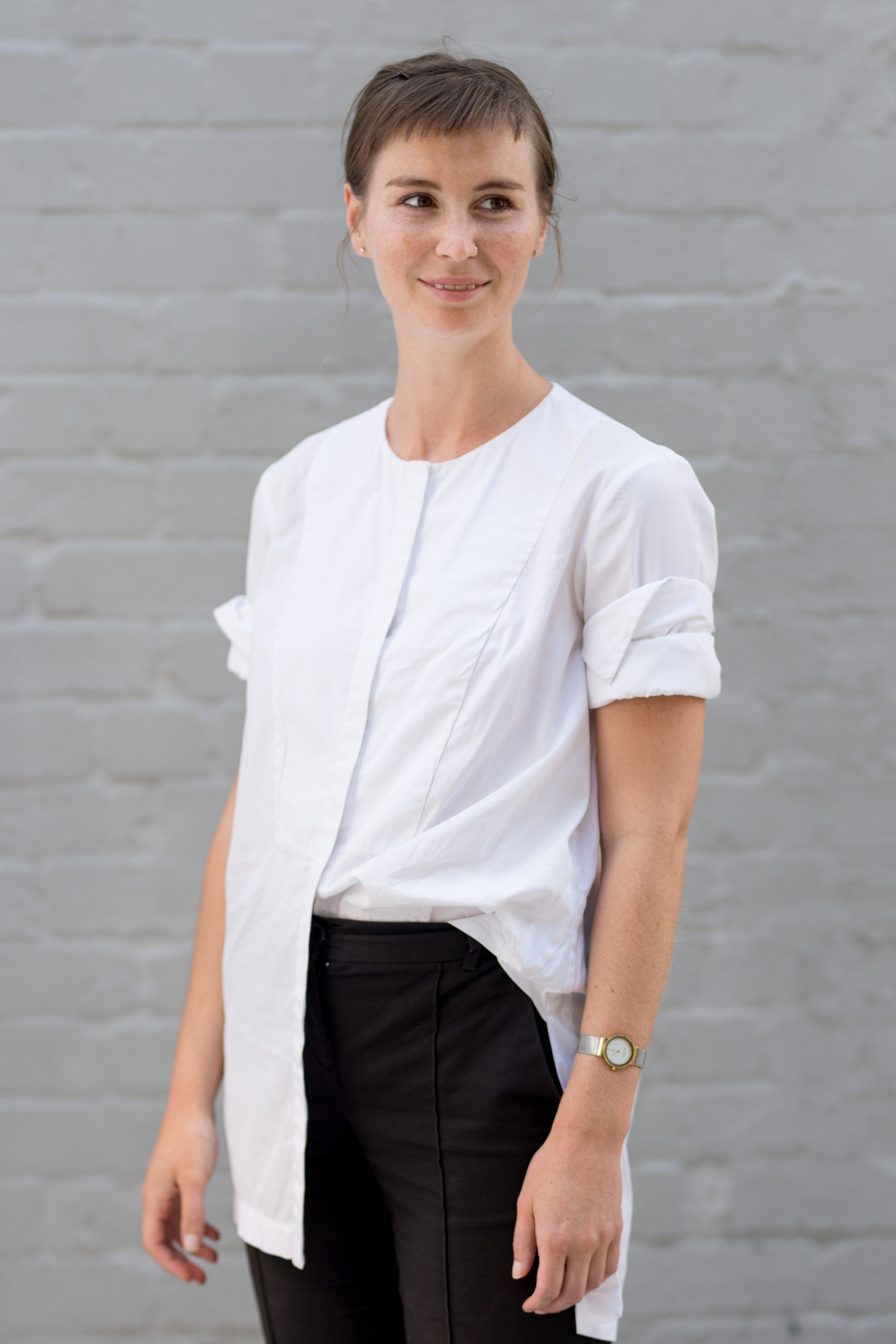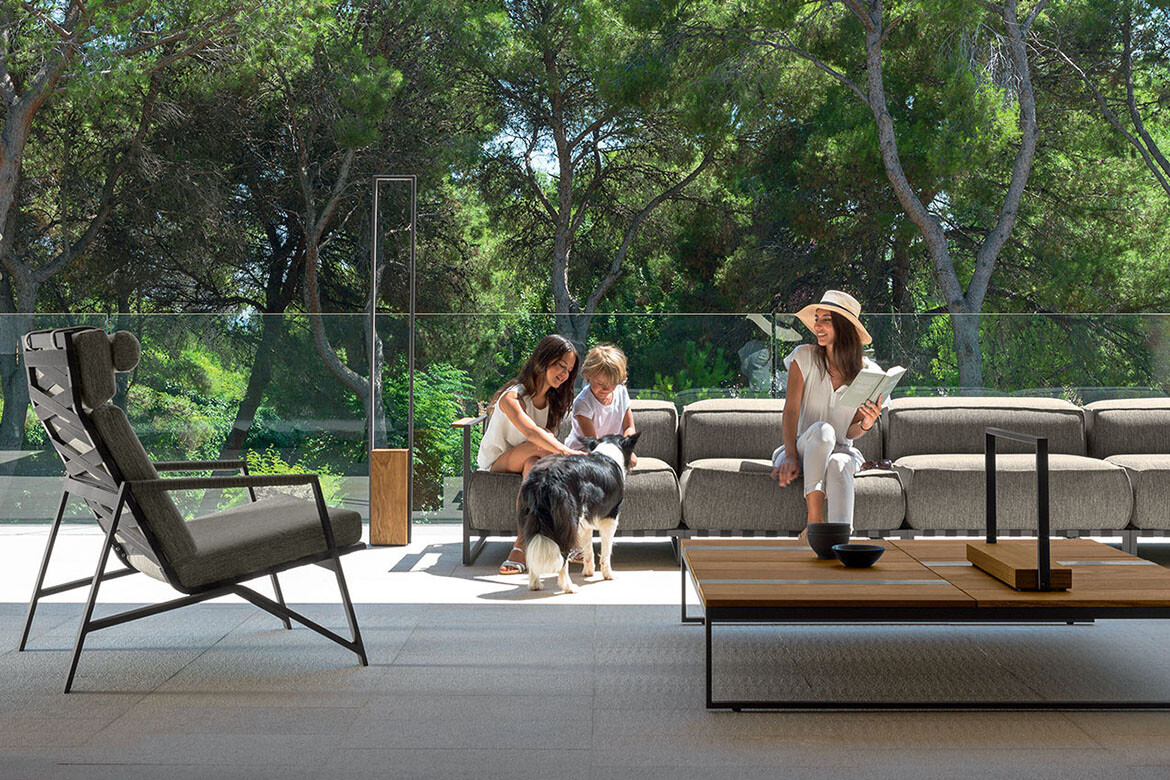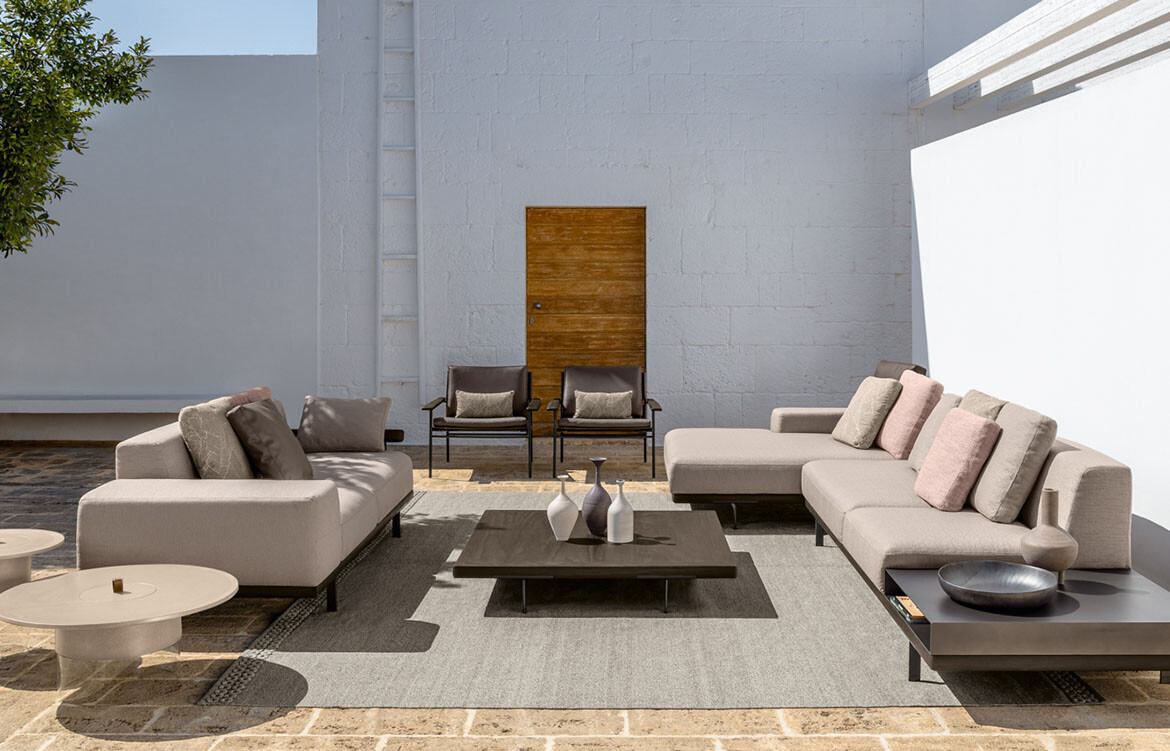Architect, designer and entrepreneur Zahava Elenberg is well-known amongst the architecture and design community. In 1998 while still a studying at RMIT in Melbourne she co-founded the award winning practice Elenberg Fraser Architecture. In 2002 she launched Move-in, a company providing complete furniture packages catering to residential and hospitality venues. By 2003 she was recognised as the Australian Telstra Young Business Woman of the Year and Ernst & Young Southern Region Young Entrepreneur of the Year in 2005.
Faced with the countless challenges 2020 has had to offer, Zahava has tapped into her experience and skillset to create yet another business, Clikclax. This time, the goal is to create products enabling a safe environment for people to return to the office. Clikclax is a new mobile system enabling teams to stay apart while working together.
The system is flexible, modular and comes in a range of colourful or neutral colourways. Suitable for offices of all sizes, Clikclax consists of a series of 10 interlocking Perspex sheets of varying shapes and sizes, plus six bases that all combine to create an easily assembled kit.
Habitus recently spoke with Zahava to get the full story.

Clikclax was initially conceived as a bespoke design solution for your office once they returned from WFM. What made you think to offer it commercially and did that mean the initial design needed to be changed/refined?
I was in the studio working out how we could all come back together safely and in accordance with the recommended physical distancing guidelines – I was imaging screens hanging from the ceiling, or some kind of divider that was not a ghastly sneeze guard, and then I was like, hang on, we need Playplax, just on a bigger scale. I figured if we needed it, then everyone else was going to need it too…and I decided to think beyond my office and design something that was fun and easy and could take over the world!
Tell us about the inspiration behind Clikclax, being Playplax, and how you’ve drawn from the toys to make your own unique design?
I had been reminiscing about my old Playplax set for some time. I remember sitting on the living room floor at my grandparent’s house when I was about five, amongst their Featherstone furniture constructing towers and forts with my grandfather, who was an aeronautical engineer. I thought I might design a range of furniture for one of our student accommodation projects using it as an inspiration and wanted to get my hands on it. I found two sets: the squares came from London and circles from Manhattan. They arrived and sat on my desk for a while. When I had my lightning bolt moment in the office, they came out to play. The whole thing came together very intuitively after that and the idea grew from there, and we were live three weeks later.
Clikclax is also a throwback to the plywood dinosaurs that I used to make with my dad, and the set of the Eames House of Cards, so this is really an amalgamation of childhood memories.
The whole thing came together very intuitively after that and the idea grew from there, and we were live three weeks later.

Tell us about the different colour stories. Are they designed with personalities in mind, or style preferences, or architectural movements?
I had seen some beautiful images of Australian animals being cared for after the disastrous fires we had at the beginning of this crazy year; a galah, a wombat and a baby grey kangaroo. They became the starting point for the colour range (we are donating $5 from each kit sold online to an Australian charity to assist with the recovery off these animals). I didn’t really have anyone in particular in mind; I just loved the idea of drawing from the bush and making something flexible and fun and colourful – like a mixed bag of Perspex lollies.
We developed a funny tone-of-voice, with reference to Australian slang and humour; and the whole Clikclax style and story become symbiotic and fluid. We had a lot of fun with the branding and wanted to bring a sense of fun and joy to these strange times and this new normal.
The system is very appealing and the pieces highly modular; do you picture Clikclax in residential work environments too?
I can see it in all kids of spaces where people need to come back together but need to keep apart, both physically and psychologically. This is a spatial divider, a system of screens that shape space in an interesting and dynamic way. It’s perfect for schools, on desks, in workplaces with 1000’s of people; it looks amazing on bar tops separating winers and diners; art galleries and boardroom tables. Clikclax is so adaptable – you can make it work anywhere at all, and the colours bring spaces to life in unexpected ways.
I see Clikclax as both a noun and a verb. It’s a beautiful object, like desk jewellery, as well as a fun thing to do.
A galah, a wombat and a baby grey kangaroo became the starting point for the colour range.

Clikclax can be configured in numerous ways, which is great, it’s highly versatile. But sometimes too much choice can be just as limiting as not enough. What are some of the standard configurations and do they relate to specific ways of working, or space available? How can the user easily find what’s right for them?
In our office, we have set it up as a series of simple screen dividers between workstations, then I built a little corner element with the leftover bits on my desk. Depending on the distancing requirements Clikclax can be configured as a stand-alone cubical, as a series of screens, or as a continuous barrier. It’s great for anyone who likes to think spatially and creatively, and just as good for people who like to follow instructions! We have some of our favourite set-ups on our website for inspiration too. The great thing is that it is not static – you can keep changing it around depending on how you feel or what you need it to do. It’s an adult size desk toy.
Not only have you incredibly quickly responded to working needs in the face of the current pandemic, but you’ve done so working simultaneously at Elenberg Fraser Architecture and your original side hustle: Move-in, a furniture and fit-out company. How do you manage your time and balance projects?
After establishing Elenberg Fraser 20 years ago, I am no longer involved with the practice. I am primarily focused on Move-in, where we specialise in full turn-key fit-outs for hotels, serviced apartments and student accommodation projects – and now Clikclax. I am also on the Board of the Melbourne International Film Festival (MIFF), which I love and gives me great pleasure. I love being able to participate in the world of ideas. I have three amazing children that are growing up way too fast, but keep me motivated and on my toes. There is no work life balance it is just a crazy fusion of elements that make life so interesting and unpredictable and challenging and rewarding. As long as you keep doing, thinking, talking and experimenting life is good and the balance sorts itself out. Kind of.
Clikclax
clikclax.com
We think you might also like these new releases from Living Edge















